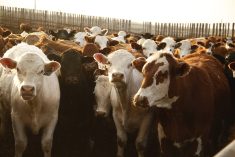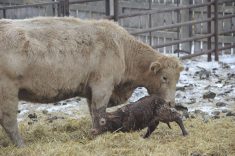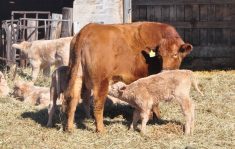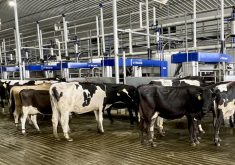Glacier FarmMedia – Calving problems have been greatly reduced over the years but there are still issues we can’t control.
One of these is malpresentations of the fetus. Some cows can deliver a calf with a foot back, but these are rare and most cows require birthing assistance.
Producers must maintain sharp observational skills to know when a cow is not acting properly or has been straining at labour for an hour with no progress.
Read Also
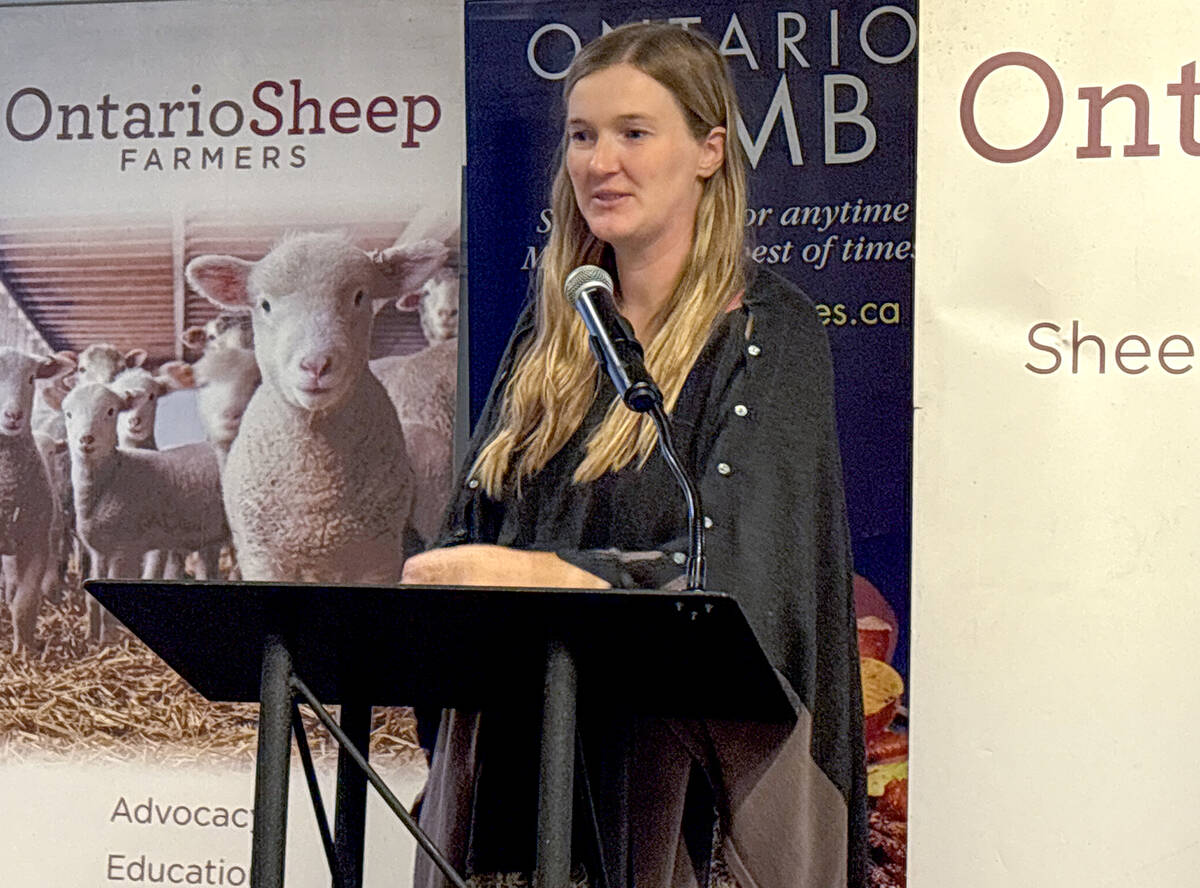
Footflats Farm recognized with Ontario Sheep Farmers’ DLF Pasture Award
Gayla Bonham-Carter and Scott Bade, of Footflats Farm, win the Ontario Sheep Farmers’ 2025 DLF Ontario Pasture Award for their pasture management and strategies to maximize production per acre.
Why it matters: It’s important for producers to know when and how to assist during a difficult calving.
As well, there are instances in which only one of the calf’s legs is protruding from the birth canal and cases in which only the calf’s head is presented. These are obvious signs the cow is in trouble and quick intervention is necessary.
With a forward presentation, three things must be present. If two feet with the head just behind are not presenting, one must search. These cases will require manipulation inside the birth canal so use two obstetrical sleeves held up with elastics or held on with a calving suit. The choice is yours but the bottom line is being able to clean the cow appropriately and keep yourself, especially your arms, very clean.
If you are doing this alone, using a maternity pen is best. Have the tail tied to one side.
I like to use booster cable clamps, which will give way if the cow goes down. To make it easier on yourself, try to have the cow standing for all manipulations.
When looking for a head or leg back, feel around and find the missing part. If the head is back, note which side it is turned or if it is underneath. Also note which leg is back and how far.
I have had many farmers phone me with what they thought was a backward calf only to find the head was pushed so far around that the calf appeared to be coming backward.
An easy way to determine if you are feeling a back leg or front leg back is to remember that with front legs the first two joints should bend the same way. Mistakes are made when a producer feels the elbow joint, which is the third joint on the front leg, and jumps to the conclusion that it is the hock on the back leg. This is a common mistake.
To bring a retracted leg forward, you must manoeuvre the other leg and head back into the birth canal.
This will take lots of lube and you will have to fight against the cow’s contractions. An epidural may help but most are done without.
If you have caught the cow early, it may be a matter of going in and pulling the retracted foot up. Make sure to cup around the hoof so as not to poke a hole in the cow’s uterus. Once you get all three things lined up, proceed with normal calving.
Sometimes the head and one leg are both through the vulval lips. This means the missing leg is considerably repelled and if the calf is still alive, the whole mass must be pushed into the vagina to get room. Severe ones may need a C-section if the calf is still alive or a fetotomy by your veterinarian if the calf has died.
However, most can be pushed in and turned into a normal delivery. Keep in mind, especially with heifers, that the calf may have been coming normally but because of a lack of room, the head or one foot was deflected to make room. If one gets everything lined up again, there may still be lack of room and a C-section may be necessary.
In calves that have died in utero, it is common for a limb to be down, possibly from lack of rigidity. This must be corrected to allow the calf to come out and the cow may then go on to adopt a twin or orphan.
In a calf with its head back, you must figure out which side the head is deflected and which direction it will be pulled around. The quicker it is found, the easier this should be. You can use the legs as a handle to repel the calf and make room in the uterus.
Techniques include cupping the hands under the head and swinging it around or grabbing the calf’s nostrils and using a head snare. An extra-long chain properly placed through the mouth and behind the ears will mimic a head snare.
All techniques will depend on the force necessary to get the head to pull around. Once corrected, I always check to see if the calf is alive by putting my hand in its mouth to see if I get a bite or gag reflex.
The possibility of malpresentations increases with twins, so always check for a second calf.
If you see no significant progress after 20 minutes, call for help from a more experienced person or your veterinarian.
With every calving, the goal is to get a live calf but the other goal should be to look after the cow. Be clean to avoid contamination and facilitate breeding for next year. Use appropriate painkillers where described by your veterinarian.
Any cows that are assisted warrant the use of NSAID painkillers unless it is very easy.
Remember, when malpresentations happen, your help can make a real difference in the outcome. Have the necessary supplies, such as chains, handles, head snares, gloves, surgical soap and lubricant, ready if you need them.
– Roy Lewis practised large-animal veterinary medicine for more than 30 years and now works part time as a technical services veterinarian for Merck Animal Health. This article was originally published at The Western Producer.






